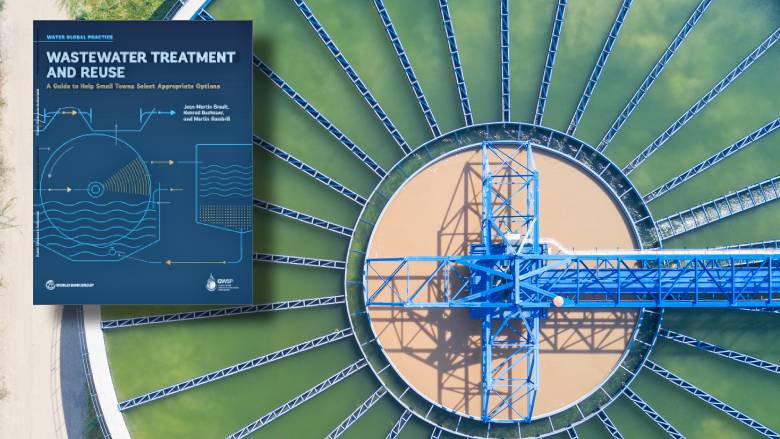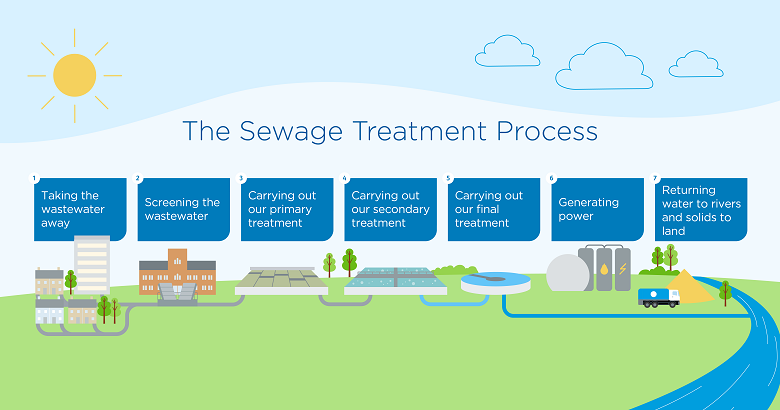Secret Challenges in Urban Waste Water Treatment Methods
Secret Challenges in Urban Waste Water Treatment Methods
Blog Article
Optimizing Waste Water Treatment Procedures: Approaches for Improved Water Quality and Resource Recuperation
In the world of wastewater treatment, the mission for improving effectiveness and sustainability through procedure optimization is a recurring search that holds tremendous value. From cutting-edge technologies to innovative resource recuperation methods, the landscape of wastewater treatment is developing quickly.
Significance of Process Optimization
Optimizing drainage treatment processes through thorough procedure optimization is crucial for making the most of efficiency and guaranteeing environmental sustainability. By fine-tuning each action of the therapy process, from initial consumption to last discharge, water treatment centers can attain higher levels of impurity elimination, decrease energy intake, and lessen the generation of waste spin-offs. Process optimization entails examining key efficiency indicators, such as hydraulic retention times, sludge retention times, and nutrient degrees, to determine areas for renovation and execute targeted services.
Efficient procedure optimization not just boosts the total efficiency of waste water therapy plants but also adds to cost savings and governing compliance. By optimizing processes, operators can achieve greater treatment capabilities without the need for substantial infrastructure financial investments. In addition, enhanced treatment performance leads to cleaner effluent discharge, decreasing the environmental effect on getting water bodies and communities.

Advanced Treatment Technologies
In the world of drainage therapy, the implementation of innovative treatment modern technologies plays a critical duty in enhancing the general performance and effectiveness of the therapy procedures. These advanced modern technologies offer ingenious remedies to address complex pollutants existing in wastewater streams, ensuring the removal of contaminants to satisfy rigorous water quality standards. Advanced treatment procedures such as membrane layer bioreactors, ozonation, progressed oxidation procedures, and turn around osmosis enable the complete elimination of impurities, consisting of emerging pollutants like pharmaceuticals and personal care products.
Moreover, these modern technologies facilitate resource recovery by extracting important materials such as phosphorus, nitrogen, and energy from the wastewater. For example, advanced nutrient removal innovations can recuperate phosphorus and nitrogen for reuse in agricultural fertilizers, while energy recovery systems like anaerobic digestion can harness biogas for electrical power generation. By incorporating advanced therapy modern technologies right into wastewater treatment plants, operators can improve water top quality, lower environmental impact, and move in the direction of a much more resource-efficient and sustainable method to wastewater management.
Source Recovery Techniques
Resource healing methods in wastewater treatment processes play an essential function in maximizing the application of useful resources contained within wastewater streams. These methods objective to essence and reuse products such as nutrients, energy, and water from the wastewater, transforming what was once considered waste right into important sources. One common source recovery strategy is the extraction of nutrients like phosphorus and nitrogen from wastewater for reuse as plant foods or in industrial procedures. Additionally, power recovery techniques such as anaerobic food digestion and biogas production aid harness the energy possibility of raw material in wastewater to generate power or warm.
Water healing strategies, such as membrane innovations and progressed purification systems, enable the treatment and reuse of water for non-potable applications like watering or commercial processes. By executing resource recuperation strategies in wastewater treatment plants, not only can useful sources be preserved and reused, but the general sustainability and performance of the therapy process can be dramatically improved. As the emphasis on resource shortage and ecological sustainability continues visit this page to grow, the significance of integrating source recovery techniques right into wastewater therapy procedures comes to be significantly apparent.
Sustainable Practices in Wastewater Treatment
Lasting methods in wastewater treatment incorporate a variety of strategies aimed at minimizing the environmental impact of treatment processes find more while making the most of source recovery. One vital facet of sustainable wastewater therapy is the application of energy-efficient technologies to reduce the carbon impact of therapy plants.
Additionally, the fostering of advanced therapy technologies that advertise water reuse and recycling plays a vital role in lasting wastewater management. By dealing with wastewater to a high standard, it can be repurposed for numerous non-potable applications, such as irrigation, commercial processes, and even safe and clean water production in some instances. This not only preserves important freshwater sources but likewise lowers the volume of effluent released into the atmosphere.

Study on Effective Optimization
As wastewater therapy centers significantly concentrate on sustainable practices, real-world study showcasing successful optimization techniques function as vital versions for sector innovation. One such instance research focuses on the application of sophisticated nutrient removal innovations in a community wastewater treatment plant. By incorporating organic nutrient elimination procedures and enhancing operational specifications, the facility accomplished significant decreases in nitrogen and phosphorus degrees discharged into receiving waters, inevitably boosting total water high quality.
One more noteworthy case study involves the assimilation of anaerobic food digestion systems in an industrial wastewater treatment plant to enhance power healing and resource performance (Waste Water Treatment). With the digestion of organic waste materials, the center not just created biogas for energy manufacturing however also decreased the quantity of sludge calling for disposal. This double advantage not just enhanced the plant's sustainability efficiency however also caused price financial savings
These effective optimization strategies demonstrate the capacity for wastewater treatment facilities to achieve both financial and environmental advantages via ingenious methods and efficient procedures. By picking up from these study, sector professionals can further maximize their own operations to improve water high quality and source healing.
Final Thought
Finally, enhancing drainage therapy processes click to find out more with advanced technologies, source recuperation techniques, and lasting practices is essential for improving water quality and taking full advantage of resource healing. Waste Water Treatment. Study have actually demonstrated effective implementation of optimization methods in various wastewater therapy facilities. By remaining to focus on process optimization, we can ensure effective and effective therapy of wastewater, eventually causing a more ecologically friendly and lasting strategy to managing water resources
By fine-tuning each action of the therapy process, from initial intake to final discharge, water treatment centers can achieve greater degrees of pollutant removal, minimize energy consumption, and minimize the generation of waste byproducts.In the world of waste water therapy, the implementation of innovative treatment innovations plays a pivotal role in improving the general effectiveness and efficiency of the treatment processes. By incorporating advanced treatment modern technologies right into wastewater therapy plants, operators can boost water quality, reduce ecological influence, and relocate in the direction of an extra sustainable and resource-efficient method to wastewater management.
By executing source healing methods in wastewater treatment plants, not just can useful sources be saved and reused, but the general sustainability and effectiveness of the treatment process can be substantially improved. Lasting techniques in wastewater therapy incorporate a range of approaches aimed at minimizing the ecological effect of therapy procedures while optimizing source recovery.
Report this page